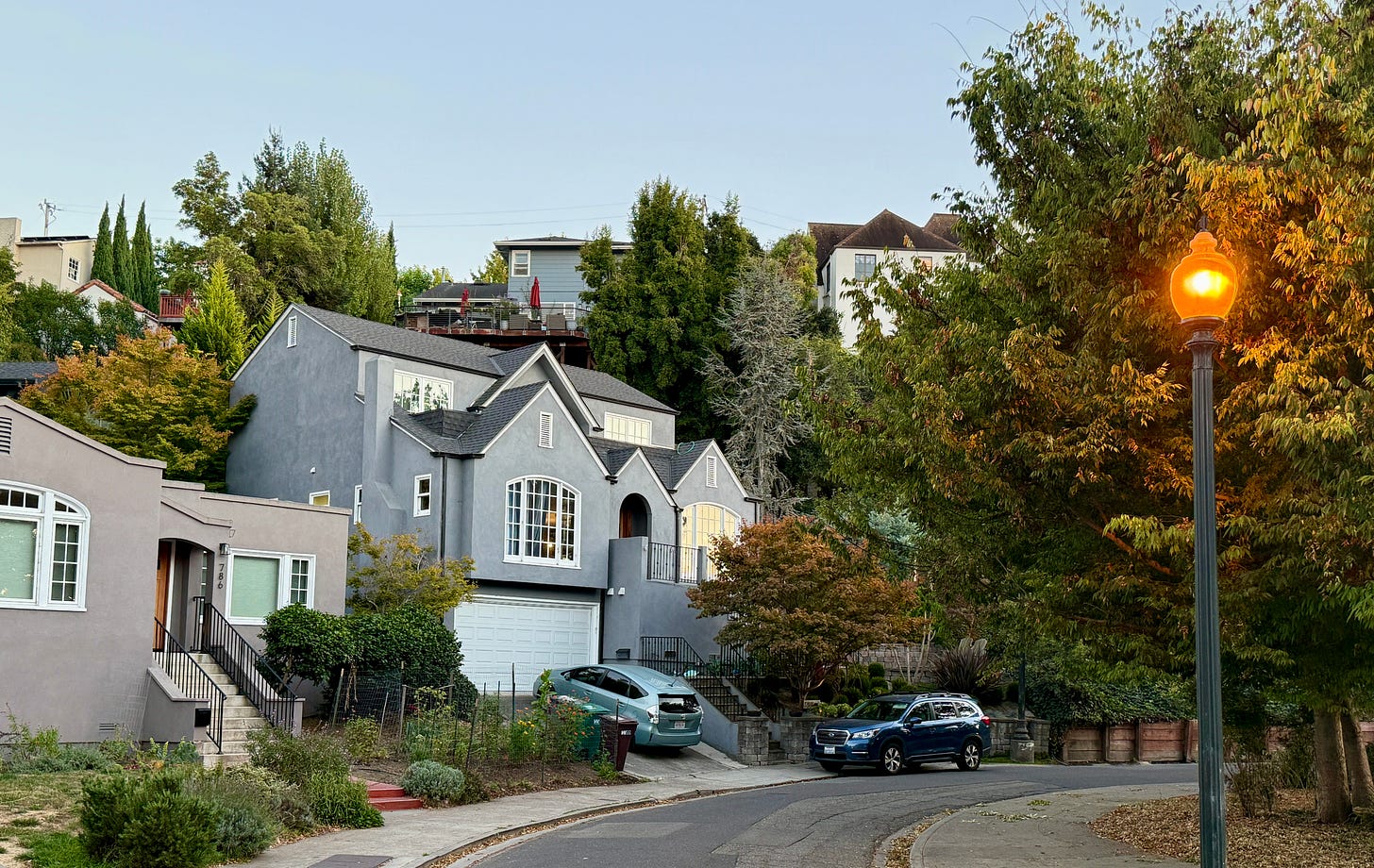Neighborhood Spotlight: Crocker Highlands in Oakland
Each month, I take a closer look at one Bay Area neighborhood through the lenses that matter most in the housing market: schools, walkability, commute, climate, housing stock, and market sentiment.
For all the headlines Oakland attracts, it is a city of contrasts, 78 square miles where one neighborhood can feel worlds apart from the next.
There are certain Oakland neighborhoods that make you slow down. The streets narrow into gentle curves, shaded by old oaks and maples. The houses sit proudly, some with leaded glass windows, others with wide Craftsman porches.
This is Crocker Highlands. A neighborhood where the architecture speaks for itself, but what really defines it is the sense of stability. People do not move here casually, they move here with intention.
Here is how Crocker Highlands measures up across the criteria that matter most in the Bay Area market:
Climate and Geography
Set into gentle hills just above Lake Merritt, Crocker Highlands enjoys sunnier weather than Oakland’s western flats. The tree canopy and elevation give it a cozy microclimate. On summer evenings, it feels just a touch cooler and more sheltered than the surrounding city.
Schools (K–12)
Crocker Highlands Elementary (Niche grade A-, GreatSchools 8/10) is the anchor for most families moving here. People often pick this neighborhood largely because of that elementary, and it shows in demand. When kids move on, they typically attend Edna Brewer Middle School, which rates 7/10 on GreatSchools and B+ on Niche. Many parents see it as solid, but not quite at the same top tier level as the elementary zone. By high school, Oakland High is the default public track. It offers AP courses and a lot of history, but its GreatSchools rating dips to 4/10, and many families begin considering alternative or private options once students reach high school age.
Housing Stock
Architectural charm defines Crocker Highlands. Early 20th-century Craftsman and Tudor homes dominate, many of them beautifully preserved or tastefully updated. Lots tend to be larger than in denser Oakland neighborhoods. Price ranges reflect the neighborhood’s cachet. Homes often sell between $1.3M and $2M+, depending on size, condition, and proximity to Lakeshore.
Walkability
The neighborhood itself is leafy and quiet, but it connects seamlessly to the bustle of Lakeshore and Grand Avenue. Residents walk or bike down the hill for groceries, cafés, and restaurants, while enjoying the peace of residential streets when they come home. It is not Temescal-level density, but it strikes a balance between serenity and access.
Commute Access
For Oakland commuters, downtown is about a 10 to 15 minute drive. Access to I-580 makes it straightforward to reach San Francisco or Berkeley. Rockridge BART is a short drive or bike ride away. It is not a transit-first neighborhood, but it does not feel disconnected either.
Market Sentiment
Crocker Highlands holds a reputation for stability. Buyers see it as a neighborhood worth stretching for, both for the school and for the architectural character. Sellers benefit from that perception. Homes here tend to attract steady competition and maintain value through market cycles. Even during softer periods, Crocker Highlands is one of those pockets where demand does not fully disappear, making it feel less speculative and more like a safe long-term investment.
In a city as diverse and dynamic as Oakland, Crocker Highlands holds a special kind of steadiness. Its leafy streets, beloved elementary school, and classic homes make it one of those rare places where people come not just to live, but to stay.


